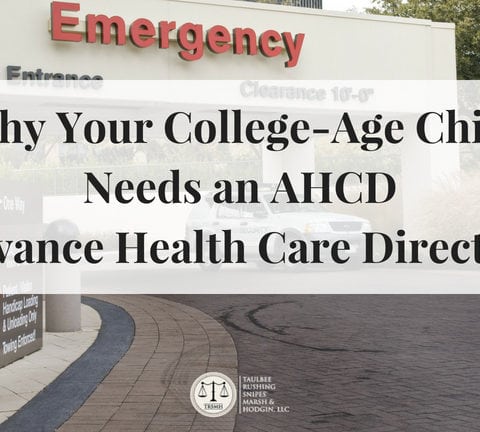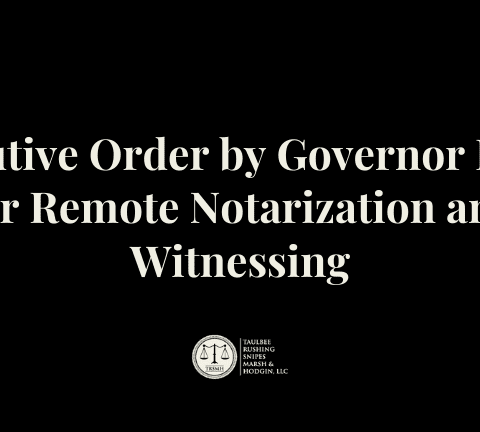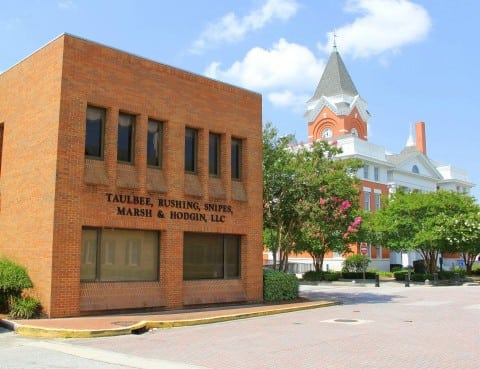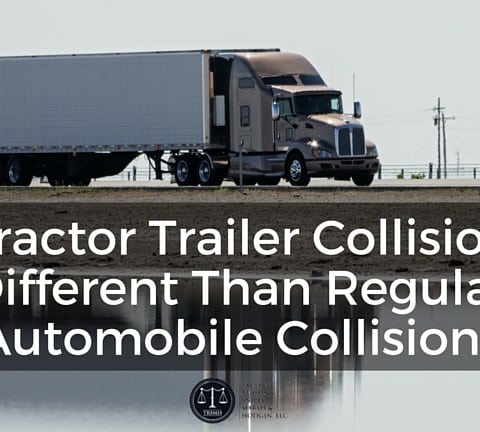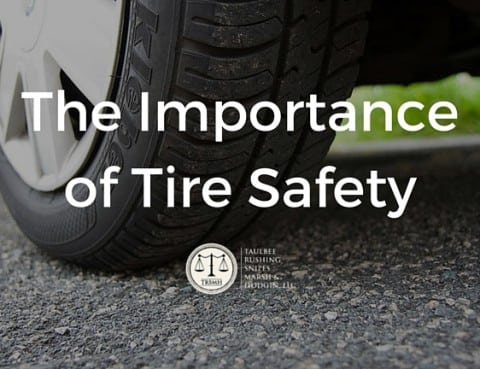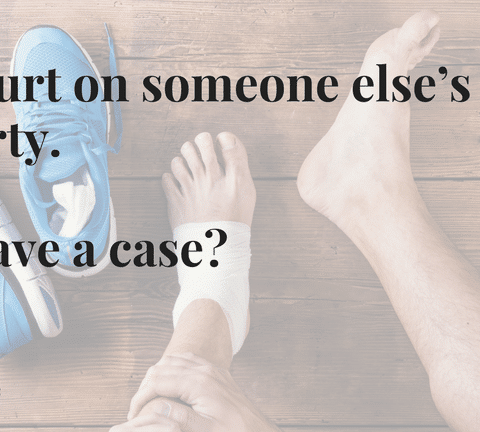Each year thousands of high school students graduate and move away from home to attend college. These newly minted college students not only need to pack shower shoes for the dorm, but also need to prepare an Advance Health Care Directive (AHCD) before leaving the nest.
Eighteen year olds are considered adults in the eyes of the law and under the Privacy Rule of the Health Insurance Portability and Accountability Act (HIPAA). Parents have no right to obtain their child’s medical information without consent.
In Georgia, anyone eighteen years of age or older can execute an Advance Health Care Directive. The AHCD allows someone to spell out their treatment preferences if they become incapacitated and designate an Agent to act on behalf of the person making the AHCD. Perhaps most importantly for parents of a college student, the AHCD also grants the Agent access to medical information, including information covered by HIPAA. No parent wants to receive a call at 2:00 AM telling them their child has been hurt and is in the hospital, and definitely does not want to be told by an ER nurse that they are not permitted to give you any information. If your child has an AHCD, this could save you, as a parent, a lot of time, undue burden and worry.
Call our firm today to assist you and your child to plan accordingly and give you peace of mind as your child leaves home.
From the State Bar of Georgia…
Late yesterday afternoon, Gov. Brian Kemp issued an executive order permitting remote notarization and witnessing of all documents. The State Bar is grateful for the work of Gov. Kemp and his staff who recognized the critical need for remote notarization and witnessing in Georgia during this unprecedented time and the importance of maintaining access to legal services through this crisis. Additionally, we appreciate the counsel of the State Bar’s Fiduciary Section and Family Law Section who gave critical input in the process.
The executive order provides a basic framework that must be followed for notarization and witnessing using real time audio-visual technology. Notably, a notary public performing a notarial act using real time audio-visual technology pursuant to the executive order must be a licensed Georgia attorney or a notary public supervised by a licensed Georgia attorney. The signer must also present proof of his or her identity to the notary via real time audio-visual technology. Additionally, a document notarized or witnessed using real-time audio visual technology must be signed, certified, and executed by the notary and/or witness(es) on the same calendar day that the signer signs the document.
The order reads in relevant part:
IT IS HEREBY ORDERED
That any purported requirement under the laws of this state that a notarial act performed pursuant to Chapter 17 of Title 45 of the Official Code of Georgia must occur in the physical presence of the notary public is hereby suspended, and any such act may be performed remotely if the all following requirements are met:
1. The notary public uses real-time audio-video communication technology or any similar real-time means of electronic video conferencing that allows the parties to communicate with each other simultaneously by sight and sound in order to notarize signatures.
2. The notary public is an attorney licensed to practice law in the State of Georgia or is operating under the supervision of an attorney licensed to practice law in the State of Georgia. As used here, the term “supervision” shall mean that the notary public is an employee, independent contractor, agent, or other representative of an attorney or an attorney observes the execution of documents either in person or via the real-time audio-video communication technology.
3. The signer requiring the notarial act from the notary public presents satisfactory evidence of identity as required in Code Section 45-17-8, while connected to the real-time audio-video communication technology.
4. The notary public is physically located in the state of Georgia.
5. The signer transmits a copy of the signed document to the notary public on the same date it was executed for execution by the notary.
IT IS FURTHER ORDERED
That any requirement under Georgia law, including, but not limited to, Code Sections 10-6B-5, 15-9-86, 19-3-62, 19-8-4, 19-8-5, 19-8-6,19-8-7, 29-2-11, 29-4-3, 29-5-3, 31-32-5, 44-5-128, 44-5-143, 44-5-144, 44-5-145, or 53-4-20, including a power of attorney, verified petition filed in probate court, antenuptial agreement, surrender of rights for adoption, return filed in probate court, standby guardian designation, nomination of guardian, nomination of conservator, advance directive for health care, designation of successor custodian, will, codicil, or other document be signed, subscribed, executed, witnessed, attested, acknowledged, or affirmed in the physical presence of another individual or other individuals may be satisfied by the use of audio-video communication technology or any similar real-time means of electronic video conferencing that allows all of the parties to communicate with each other simultaneously by sight and sound.
IT IS FURTHER ORDERED
That the official date and time of the notarization or witnessing performed via the use of audio-video communication technology or any similar real-time means of electronic video conferencing pursuant to this Order shall be the date and time when the notary and/or witness(es) witness the signature via the video conference technology.
IT IS FURTHER ORDERED
That all documents notarized or witnessed via the use of audio-video communication technology or any similar real-time means of electronic video conferencing pursuant to this Order shall be signed, certified, and executed, as appropriate, by the notary and/or witness(es) on the same calendar day that the signer signs the document.
You can read the entire order here.
The Bar appreciates the patience of so many Georgia lawyers who have eagerly awaited this order. We encourage those who plan to notarize and witness legal documents through these means to closely follow the instruction of the executive order. The State Bar’s ethics helpline is available to assist lawyers with any questions at 404-527-8741/800-682-9806 or via email by logging in to the State Bar website. Additionally, we plan to post best practices for using this technology in conjunction with relevant sections on the State Bar’s COVID-19 resources page.
Please keep in mind that this executive order, like those that have proceeded it, is intended to encourage social distancing and curb exposure to COVID-19. While the governor has designated entities providing legal services as “critical infrastructure,” we encourage law firms and other legal service entities to work remotely if they have the capacity to do so.
My hope is that you all remain safe and healthy as our profession continues to grapple with this national public health emergency.
Sincerely,
Darrell Sutton
President, State Bar of Georgia
president@gabar.org
In an effort to assist in the prevention and slow of the spread of the novel Coronavirus COVID-19, our firm is asking our business partners and clients to assist us in these unique times. At this time our offices will remain open to serve our clients, however, we are requesting your assistance in keeping our community, state, nation and world healthy.
First, please do not come by our offices without an appointment as we are seeking to perform as much legal work as possible via telephone and electronic communications. Attorneys and staff are working from home as situations allow as we seek to limit exposure in our offices. If you need your attorney, please email the attorney or the attorney’s paralegal directly, call the office at (912) 764-9055 or contact us through our firm website at www.statesborolawgroup.com and your message will be forwarded to the appropriate attorney for you.
If you are attending a real estate closing, please be aware that for your safety we are seeking to limit attendees at each closing beginning March 16, 2020. We ask that you do not arrive early and please announce yourself to the receptionist as soon as you arrive so we can move you to a conference room as quickly as possible. Only parties who are legally required to sign documents should attend and we ask that you do not bring any additional family members or persons to closings. We regret this request as most closings are a celebration and a happy time but this protects not only our attorneys and staff but also the parties attending. Please also be prepared for sellers and buyers to sign separately in many circumstances.
We value each of our clients and business partners and our goal is to keep all of us safe during these unprecedented times. Thank you for your understanding and cooperation.
At 65 miles per hour any vehicle, commercial or passenger, is traveling 95 feet per second.
However, the distance required to stop a vehicle changes dramatically as the size and weight of the vehicle increases. Simply stated, larger and heavier vehicles require more distance to stop than smaller and lighter vehicles.
A passenger car traveling 65 miles per hour can brake to a controlled stop in approximately 316 feet given a normal perception and reaction time by the driver, or about the length of football field. A tractor trailer traveling 65 miles per hour with the same perception and reaction time by the driver would require 525 feet to brake to a stop, or almost the length of TWO football fields.
Stopping distance is just one example of how tractor trailers present different hazards than passenger cars. The unique safety challenges presented by tractor trailers are the reason the Federal Motor Carrier Safety Administration enforces specialized rules called the Federal Motor Carrier Safety Regulations (FMCSR) against large commercial vehicles. The FMCSR apply to employers, employees and commercial motor vehicles engaged in interstate commerce.
The FMCSR require drivers to submit to specialized tests in order to drive commercial trucks. Drivers are required to engage in pre-trip safety inspections and maintain log books that document their driving time, rest time and off-duty time. The FMCSR limit the number of hours a driver may operate a commercial vehicle.
The FMCSR require the trucking companies to maintain records related to their driver’s qualifications and maintenance of their trucks. All commercial vehicles are required to meet certain braking standards as well as many other safety features to prevent collisions. Because of their weight, collisions involving commercial vehicles often result in catastrophic injuries or death.
Our firm has handled numerous cases where tractors trailers were travelling either above the posted speed limit or too fast for conditions and unable to stop in order to avoid a collision. We have represented the family of persons killed by drivers who were fatigued and operating their vehicles beyond the limits allowed. Tractor trailer collisions are very different than automobile collision and need the experience of an attorney familiar with these differences.
For more information of commercial vehicle safety, click on these links:
http://www.iihs.org/iihs/topics/t/large-trucks/topicoverview
If you or someone you know has been injured as a result of a a tractor trailer or other commercial vehicle, contact our office for a free consultation.
Tires may be the most important part of having a safe vehicle. Your tires are the only part of the vehicle that touches the roadway. When accelerating from a stop or braking to stop, your tires form the essential contact with the road that allows movement and travel. Despite their enormous importance, many drivers do not appreciate tire safety and how to detect unsafe tires.
Never operate a vehicle with a improper tread depth. Tread depth serves two important functions. First, tread depth allows tires to “move” water from beneath the tire and allow the tire to grip the roadway during wet weather. Insufficient tread depth makes your vehicle much more likely to hydroplane. Second, tread depth serves a measure of use and overall wear on the tire. As tread depth decreases, the tire has been used more and is more likely to suffer some type of failure. Tires that are run with insufficient tread depth are much more likely to suffer tread separations and other failures while being operated at highway speeds. These type of failures often lead to loss of vehicle control and tragic consequences.
Most states, including Georgia, require tires to have a minimum of 2/32 of an inch of tread in order to legally remain in operation on a passenger vehicle and 4/32 of an inch on commercial vehicles. For a passenger vehicle, an easy way to check tire tread is to put a penny in the tread with Lincoln’s head upside down. If you can see the top of Lincoln’s head, it is time to change your tire.
Never operate a vehicle on tires with improper or low air pressure. Improperly inflated tires cause the tires to generate excess heat. Over time, excess heat will cause a tire to fail resulting in a blowout or tread separation. You should check tire pressure and tread monthly. Checking your air pressure and tread will not only help with safety, but will also help with fuel consumption. Have your tires rotated, balanced, and aligned whenever you take your vehicle in for an oil change.
Tires, like any other rubber product, have a limited service life regardless of tread depth and use. This fact has been long-acknowledged by automakers and some tire manufacturers. Yet, the public, and even tire retailers and service technicians, know little about the dangers of aged tires. Aged tires are often unsuspectingly put into service after having served as a spare, stored in garages or warehouses, re-sold on the used tire market or are simply used on a vehicle that is infrequently driven. In many instances these tires show no visible sign of deterioration, and absent any visible indicators, tires with adequate tread depth are likely to be put into service regardless of age. Simply stated, over time tire rubber reacts with oxygen and its elasticity and resistance to failure decreases. The sidewall of your tire contains a DOT number. This number allows you to determine the manufacture date of your tire. As a user, you should be very concerned and replace any tire that is over five or six years old. Never operate a vehicle with tires that have cords, steel or cloth that is exposed from beneath the tread or rubber sidewalls.
Over the past few years, our firm has handled numerous cases involving tire failures. The tire failures that led to these cases involved bad design, poor manufacture and assembly, and problems with the formula for making the different rubber components used in tires. We have handled multiple cases against Michelin/Uniroyal, Bridgestone/Firestone, Continental and Cooper.
For more information about tire safety, check out these websites:
http://www.nhtsa.gov/Vehicle+Safety/Tires
http://www.safetyresearch.net/tire-safety
If you or someone you know has been injured as a result of a defective tire or product, contact our office for a free consultation.
If you sustained an injury on property owned by another person or a corporation, it is important to get to an attorney experienced in the area of premises liability.
An experienced attorney will know the right questions to ask in order to assess whether you have a valid claim and the best way to move forward with your case. Each case is unique and, therefore, it is important to seek a legal opinion regarding the facts specific to your case. However, listed below are the basic elements of a successful premises liability case so that you will know what to expect when you meet with your attorney.
Negligence.
In order to be successful in a premises liability case, you must show that the property owner was negligent in some way. The classic examples of negligence include liquid spilled on the floor or a broken handrail on a staircase.
However, there are infinite ways that a property owner can be negligent and only an experienced attorney will be able to tell you if the particular facts of your case constitute negligence. Additionally, whether the property owner is considered negligent or not may depend on the reason you were on the property. For example, a customer shopping in a public store is owed a greater duty than a salesperson who enters the property for his or her own purposes. Therefore, it will be easier to show that the store owner was negligent in a case involving the customer rather than the case involving the salesperson. Your attorney will know to find out the reason you were at the store and be able to advise you accordingly.
Injury.
Even if the property owner was blatantly negligent, you do not have a viable case unless you can show that you were somehow injured. Some common examples of injuries resulting from premises liability include:
- Head injuries
- Traumatic brain injuries
- Neck and back injuries
- Broken bones
- Dog bites
- Drowning and other swimming pool injuries
- Assault or robbery resulting from inadequate security
- Parking lot accidents
- Elevator and escalator injuries
- Injuries related to faulty crowd management
- Injuries from toxic chemicals or fumes
Causation.
Finally, you must prove that the property owner’s negligence caused your injury. Even if you are badly injured, property owners (and their lawyers) will try to argue that something other than their negligence caused the injury.
A simple example of this type of argument would be a property owner claiming that the injured party’s choice of footwear was the cause of their fall. However, there are infinite excuses that defense attorneys will try to assert to keep from paying for your injuries. Only an attorney experienced in premises liability law will know to expect these kind of tactics and be able to prepare you to defend against them.
If you or someone you know has been injured on property owned by somebody else, please call us today for a free evaluation of your case.
WHAT HAPPENED?
The Clean Water Act authorizes the Environmental Protection Agency (EPA) and Army Corps of Engineers (ACOE) to limit pollution in “navigable” waterways. On June 29th, the EPA published its Clean Water Rule, which expands the definition of navigable waterways to include the tributaries that feed into those waterways. Twenty-seven States, including Georgia, immediately filed suit to enjoin enforcement of the new Rule claiming that it infringes on States’ rights. United States District Courts in Georgia and West Virginia agreed with the EPA that legal challenges to the Rule could only be brought in the United States Court of Appeals for the 6th Circuit and therefore denied the requests for preliminary injunction. On August 27, the District Court for North Dakota found that it had jurisdiction and granted the request of a number of States and issued a decision preliminarily enjoining the Clean Water Rule. The new Rule went into effect in all other States, including Georgia, on August 28th.
WHAT DOES THIS MEAN?
If you live in Georgia or one of 36 other States, the EPA and ACOE may assert jurisdiction over certain bodies of water that were previously excluded from their jurisdiction. According to the suit filed on behalf of the State of Georgia, these could include areas as small as roadside ditches. However, if you live in Alaska, Arizona, Arkansas, Colorado, Idaho, Missouri, Montana, Nebraska, Nevada, New Mexico, North Dakota, South Dakota or Wyoming, the government will continue to enforce the preexisting Rule with its more exclusive definitions. Obviously, this creates disharmony under the federal Rule and assures that we will see more litigation regarding the limits of the government’s jurisdiction. In the interim, it will be important to exercise caution and consult an attorney before undertaking any projects in your wetlands, streams and other areas that might now be subject to EPA and ACOE jurisdiction.
If you have questions about how this affects you, please contact our firm.

